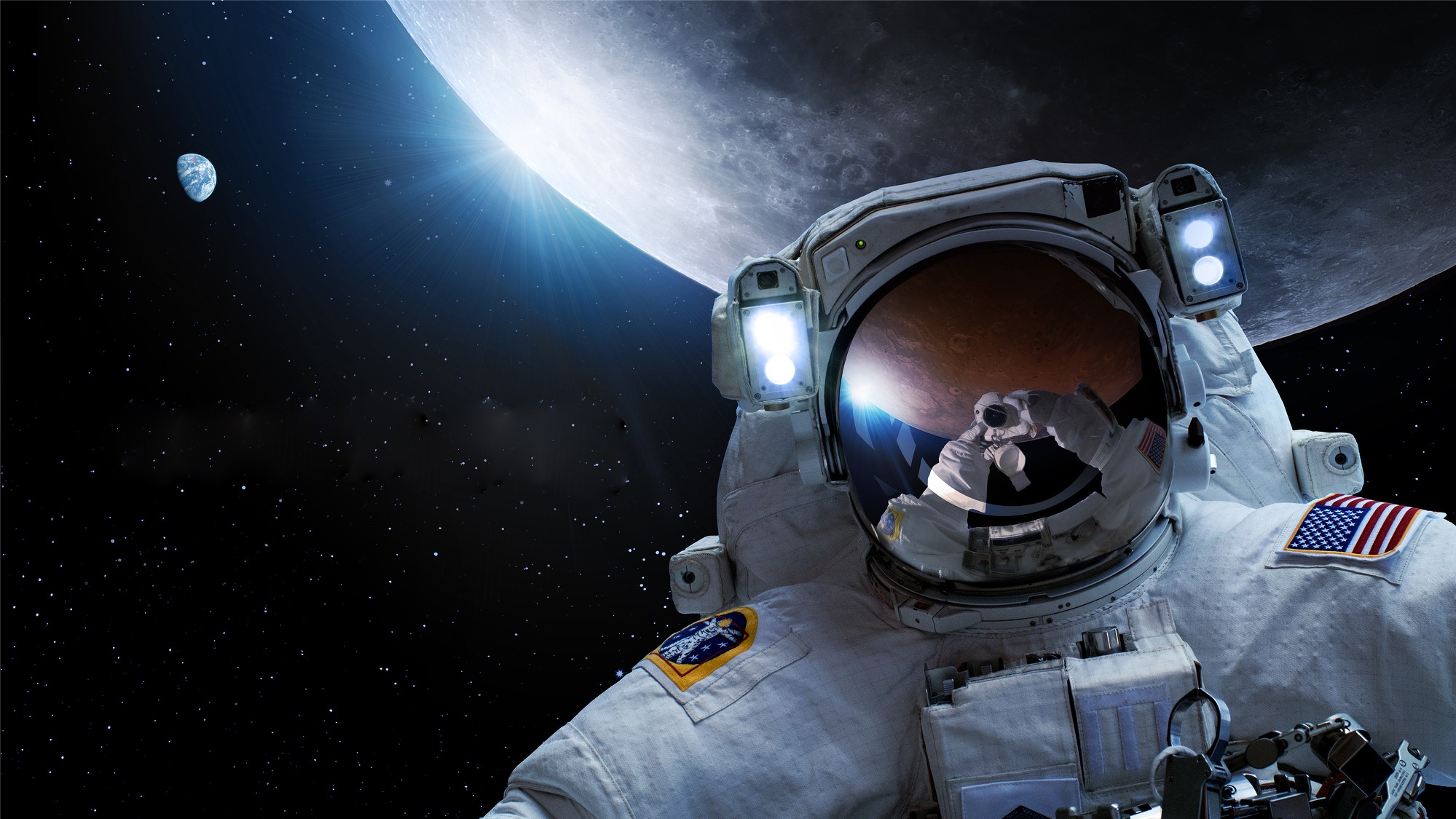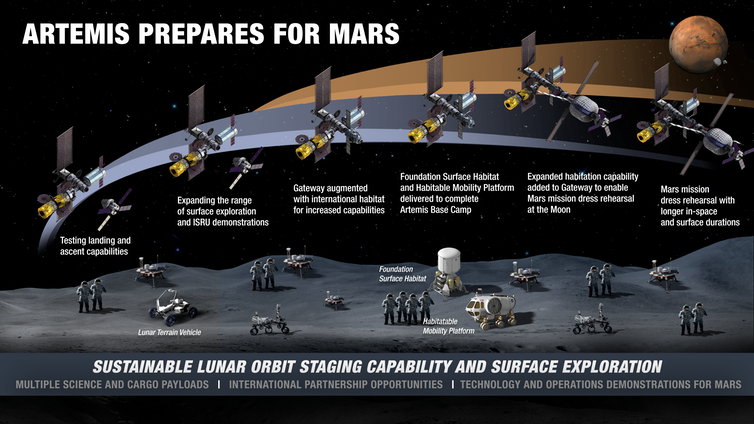NASA's Artemis moon science goals will use 'opposable thumbs' and astronaut geology training
NASA released its science definition report for Artemis 3 to prioritize its work for the first crewed lunar surface mission, set for 2024

For the first time in nearly 50 years, NASA is getting ready to do science on the moon with astronauts, who can grasp complex tools, make decisions on the spot and operate with other capabilities robots can't touch yet.
Under NASA's Artemis program, the Artemis 3 mission is expected return astronauts to the moon no earlier than 2024 for a surface stay of up to six and a half days. A new report from NASA defines the science the agency hopes to accomplish in this first human landing mission since Apollo 17 in 1972.
The high-level science report, released Monday (Dec. 7), will be used to shape the mission plans and the training details for the Artemis 3 crew, which will be selected around 2022 or 2023, according to information provided during a NASA teleconference on Monday.
Related: NASA is testing the first of its new moonwalking spacesuits
After decades of interplanetary space exploration using only robots, adding a human dimension to the moon again will allow for more subtle investigations that a machine cannot perform, Sarah Noble, lunar program scientist in NASA's science mission directorate, said during the phone call.
"We have opposable thumbs, which makes it easier to do more complicated things like drilling cores and digging trenches," she said. Astronauts will also be able to react more quickly to discoveries on the surface than controllers back on Earth, with no communications delays, Noble added. Geology training on Earth will enhance the performance of astronauts on the lunar surface, too.
While the first landing mission is currently targeted for 2024, Ken Bowersox, deputy associate administrator of NASA’s human exploration and operations mission directorate, said the agency will be satisfied with progressing towards a later landing if the incoming Joe Biden presidential administration delays the landing date.
Get the Space.com Newsletter
Breaking space news, the latest updates on rocket launches, skywatching events and more!
"I've learned it's not very productive to argue which date [we will land], and to make continuous progress," said Bowersox, a former space shuttle astronaut who repaired the Hubble Space Telescope twice in orbit.
That said, the human moon landing does have bipartisan support, he added, and Bowersox's division will move at a pace dictated by the money Congress allocates in NASA's budgets. (Funding for the 2021 fiscal year, which began on Oct. 1, is still under consideration.)

The top Artemis 3 science goals outlined in the report include the following:
- Understanding planetary processes, since the moon can be used as an analog for other "airless" worlds such as asteroids;
- Understanding the character and origin of lunar polar volatiles, including the water ice known to exist at the south pole of the moon where astronauts are expected to land;
- Interpreting the impact history of the Earth-moon system, as the moon has a surface that, unlike Earth's, preserves craters for long periods of time;
- Revealing the record of the ancient sun and our astronomical environment, since records of solar activity can become embedded in the lunar surface;
- Observing the universe and the local space environment from a unique location, which could be useful for astronomy investigations from the far side of the moon (among other science work);
- Conducting experimental science in the lunar environment, with details to be further determined once NASA figures out what experiments it will bring to the surface;
- Investigating and mitigating exploration risks, which NASA hopes to inform a human mission to Mars in the 2030s.
The report also has numerous references to the capabilities humans still have over robots. NASA's Lunar Reconnaissance Orbiter and other missions have been examining the surface from above in recent decades, while China accomplished the ambitious Chang'e-5 lunar landing a few days ago for sample return as part of its growing robotic lunar program. But getting human eyes in situ will still be an advancement over growing capabilities in robot artificial intelligence and imaging capabilities, the NASA report said.
Key among the preliminary science work will be getting astronauts involved in geology expeditions and training similar to what the Apollo astronauts did in the 1960s and 1970s. This practice gave the moonwalkers advanced university-level training in identifying rocks for their geologic value, making their collection efforts on the surface more precise.
"The optimal sample-return program is built upon geologic-context observations made by well-trained astronauts, aided by modern tools and real-time communication with scientists on Earth," NASA officials wrote in the new report, echoing the procedures Apollo astronauts made selecting their own samples decades ago.
"Astronauts should be trained and equipped to collect a variety of surface and sub-surface samples," another of NASA's training recommendations said, calling for crews to collect rocks and regolith from "geographically diverse locations" to ultimately return even more pounds (or kilograms) of material than previous missions. For context, the Apollo astronauts returned a total of 842 lb. (382 kg) of material during six landing missions between 1969 and 1972, according to NASA.
The new generation of astronauts will have robotic assistants for their work, however, from future missions still being defined under the Commercial Lunar Payload Services Program (CLPS). A few of the preliminary missions have been selected, but NASA has yet to define what these robots will be doing directly alongside the first astronauts. The agency assured reporters that more details on the first mission will come as soon as they are determined.
It appears the first Artemis human landing mission won't be equipped with a vehicle, meaning the Artemis 3 astronauts will work on foot, just like the Apollo 11 astronauts who first walked on the moon in 1969. Missions starting with Artemis 4, however, will include an unpressurized rover to "expand the exploration range and allow a more diverse sampling of regional surface and subsurface specimens," NASA said in the science report.
If NASA's plans come to fruition, Artemis 3 will kick off a series of human landing missions that will culminate in a permanent field station known as the Artemis Base Camp, the report said. The base camp will include a habitat, power systems (which will likely use solar power or batteries) and mobility systems. "As more surface infrastructure is added, future expeditions could last multiple lunar days or longer," NASA officials stated in the report. (One lunar day lasts about 14 Earth days.)
Bowersox noted that several engineering milestones are underway or coming soon for the Artemis program, including testing lunar spacesuits "in the coming years," an ongoing "green run test series" for the core stage of the Artemis 1 rocket, imminent testing for the Orion vehicle for Artemis 1 in a vacuum environment, and in 2021, downselecting the number of companies contracted to provide human landing systems. Artemis 1 is also targeted to fly next year on an uncrewed round trip to the moon.
While planning is ongoing, much will depend on how much money the agency receives for moon planning in the coming years. For example, NASA requested $3.2 billion for human landing systems in fiscal year 2021, but the Senate version of the budget bill allocates only $1 billion and the House version $600 million, either of which could put the 2024 moon-landing timeline in jeopardy, according to Space News.
Follow Elizabeth Howell on Twitter @howellspace. Follow us on Twitter @Spacedotcom and on Facebook.
Join our Space Forums to keep talking space on the latest missions, night sky and more! And if you have a news tip, correction or comment, let us know at: community@space.com.

Elizabeth Howell (she/her), Ph.D., was a staff writer in the spaceflight channel between 2022 and 2024 specializing in Canadian space news. She was contributing writer for Space.com for 10 years from 2012 to 2024. Elizabeth's reporting includes multiple exclusives with the White House, leading world coverage about a lost-and-found space tomato on the International Space Station, witnessing five human spaceflight launches on two continents, flying parabolic, working inside a spacesuit, and participating in a simulated Mars mission. Her latest book, "Why Am I Taller?" (ECW Press, 2022) is co-written with astronaut Dave Williams.









